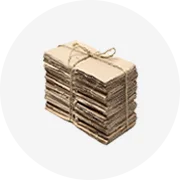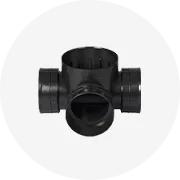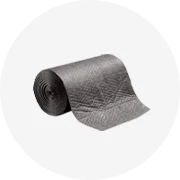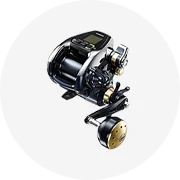































































About oil absorbent socks
An oil absorbent sock is a tailor-made instrument for the containment and absorption of oil-based spills. These items are indispensable in industrial contexts where spill management is paramount for upholding safety and ecological norms. The oil absorbent socks are constructed from selective materials that absorb oil while repelling water, rendering them perfect for spill control across diverse settings.
Types and Characteristics of Oil Absorbent Socks
Diverse variants of oil absorbent socks exist, each with distinct features to address various spill situations. The conventional oil-only absorbent sock, typically white, is utilized where oil, but not water, is present. Other specialized versions include static-resistant socks for flammable liquid environments and those with extra spill containment layers for harsh chemicals. Some are fashioned with a mesh exterior that not only secures the absorbed oil but also endures the rigors of industrial use. This assortment ensures a bespoke absorbent sock is available for every oil spill scenario, from a minor sheen on a workshop floor to a substantial spill on aquatic surfaces.
Structure and Operation of Oil Absorbent Socks
The architecture of an oil absorbent sock is intricately engineered to optimize absorption and longevity. The external sheath is typically a durable, knit fabric that resists snags and tears while permitting oil to seep into the absorbent core. This core, usually composed of premium polypropylene, is adept at soaking up and holding copious amounts of oil. Some socks boast a segmented construction, ensuring even distribution of the absorbent material, which preserves the sock's shape and efficacy when drenched. The deployment of these socks is straightforward yet efficient; they are positioned around the spill, where the polypropylene core draws the oil away from the surface, entrapping it within the sock and thereby averting further dispersion and ecological harm.
Materials and Properties
The constituents of oil absorbent socks are chosen for their hydrophobic qualities, making them perfect for oil absorption and water repellence. Polypropylene is the predominant material, favored for its superior absorbency and lightness. For tougher applications, substances like PVC and rubber are integrated to offer additional chemical and abrasion resistance. These materials not only excel functionally in spill containment but also enhance workplace safety and cleanliness. They are selected as well for their environmental merits, as many are crafted from recycled substances and are recyclable themselves, diminishing the environmental footprint of spill response.
Business Usages and Applications
Oil absorbent socks are employed across a broad spectrum of sectors. In manufacturing, they are positioned around machinery to intercept leaks before they spread. Within the maritime realm, they soak up oil from water surfaces, safeguarding aquatic life and curtailing environmental damage. In the automotive industry, they are indispensable during maintenance and repairs to manage any fluid spills. The application of these socks is proactive, not merely reactive. By situating them in leak-prone zones, companies can thwart contaminant dissemination, thereby protecting their workforce and the environment, while also economizing on the expenses linked to extensive clean-up efforts.
Functions and Tasks
The principal role of oil absorbent socks is to swiftly and effectively soak up oil-based liquids, curtailing the risk and extent of contamination. They are crafted to execute specific duties such as encircling spills to inhibit their spread, siphoning oil from water in maritime settings, and forming barriers around leak-prone equipment or containers. In urgent spill response scenarios, these socks are often the initial defense, swiftly deployed to enclose and manage the spill, which is pivotal in the early stages of a spill event.
Distinctive Features and Capabilities
A hallmark of oil absorbent socks is their selective absorbency, which allows them to soak up oil multiple times their own weight while repelling water. This attribute is particularly valuable in wet conditions or marine settings where water is prevalent. Moreover, certain socks are designed with a spunbond outer layer that adds extra tensile strength, enabling them to be wrung out and reused under certain conditions. This characteristic is especially advantageous for firms aiming to minimize waste and extend the life of their spill response resources.
Benefits and Positive Outcomes
Employing oil absorbent socks yields numerous advantages. They facilitate compliance with environmental regulations by adeptly managing potential hazardous spills. Concurrently, they contribute to a safer work environment by mitigating slip-and-fall incidents related to oil spills. The prompt deployment and significant absorbency rates of these socks reduce the interruptions caused by spills, allowing for business continuity with scant downtime. Additionally, the straightforward disposal and potential for recycling align with an organization's sustainability objectives.
How to Use Oil Absorbent Socks
To effectively utilize oil absorbent socks, one must first evaluate the spill's nature and magnitude. After selecting the suitable sock, it should be arranged around the spill's perimeter to contain it. For larger spills, multiple socks may be linked end-to-end. It is imperative to ensure the socks contact the entire edge of the spill to preclude any oil from escaping. Once the spill is fully absorbed, the socks should be discarded in line with local regulations, often as hazardous waste.
How to Choose the Right Oil Absorbent Socks
Choosing the appropriate oil absorbent socks entails understanding the specific requirements of your operation. Take into account the types of liquids involved, the average volume of potential spills, and the environment where the socks will be deployed. For outdoor or marine applications, opt for UV-resistant socks that can float. For indoor scenarios, select socks that offer greater flexibility and can navigate tight spaces. Prioritize socks with a high absorbency rate to ensure quick and efficient spill containment.
How to Clean and Maintain Oil Absorbent Socks
Although oil absorbent socks are generally intended for single use, some may be cleansed and reused in certain non-hazardous contexts. If the manufacturer specifies reusability, follow the provided cleaning instructions, which may involve expelling the absorbed oil and drying the socks. Regular inspection for deterioration is also vital to preserve their functionality. Nevertheless, it is essential to recognize that if the absorbed substance is hazardous, the socks must be disposed of appropriately and not reused.
Target Audience and Needs
The intended clientele for oil absorbent socks encompasses enterprises and industries that routinely handle oil and other hydrophobic liquids. This includes sectors like manufacturing, automotive, maritime, and environmental remediation organizations. These products fulfill the needs of these industries by offering an effective, readily deployable solution for spill containment and prevention, ensuring that operations proceed safely and in accordance with environmental standards.
Through Alibaba.com, businesses can procure a vast selection of oil absorbent socks tailored to their specific spill control requirements. The platform facilitates connections between buyers and suppliers presenting a variety of options in terms of materials, dimensions, and absorption capacities, all without concerns about quality assurances or installation services, as these are managed in line with the suppliers' standards and provisions.







